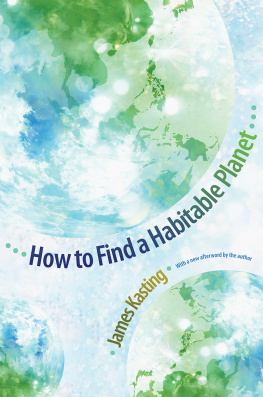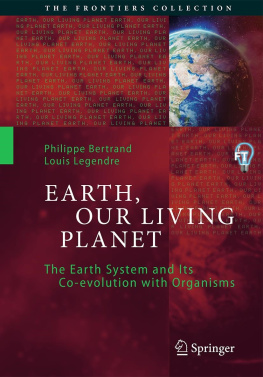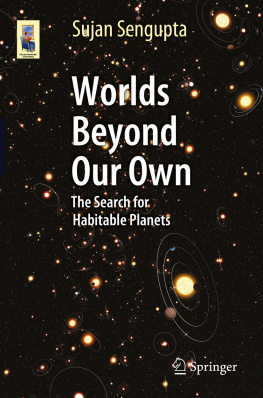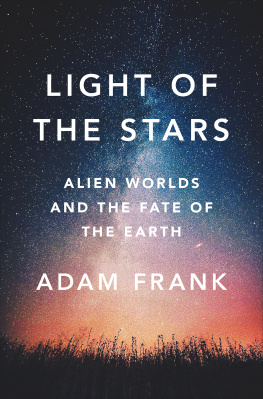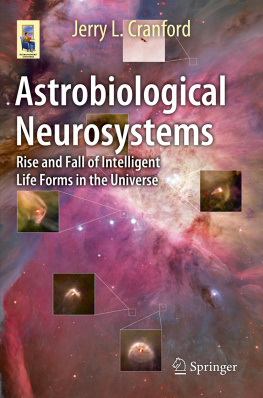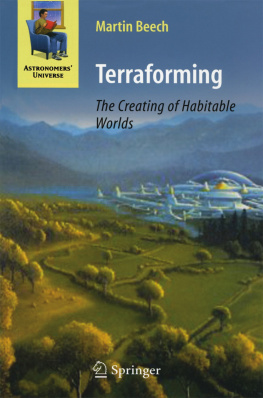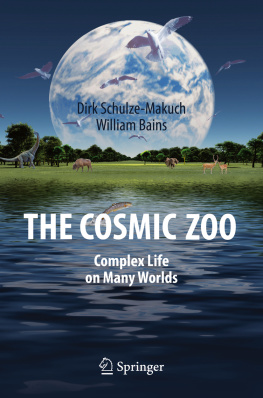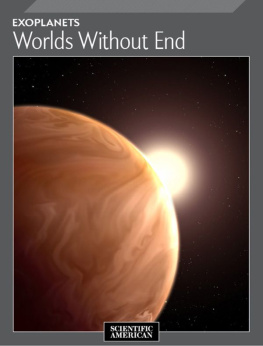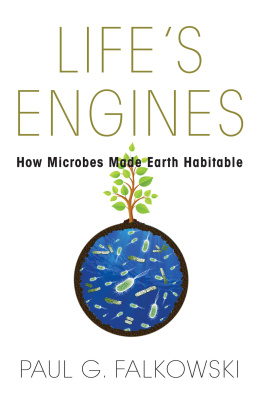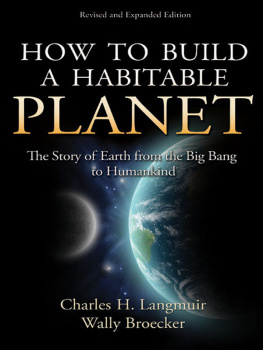How to Find a Habitable Planet
B ooks in the SCIENCE ESSENTIALS series bring cutting-edge science to a general audience. The series provides the foundation for a better understanding of the scientific and technical advances changing our world. In each volume, a prominent scientistchosen by an advisory board of National Academy of Sciences membersconveys in clear prose the fundamental knowledge underlying a rapidly evolving field of scientific endeavor.
The Great Brain Debate: Nature or Nurture, by John Dowling
Memory: The Key to Consciousness, by Richard F. Thompson and Stephen Madigan
The Faces of Terrorism: Social and Psychological Dimensions, by Neil J. Smelser
The Mystery of the Missing Antimatter, by Helen R. Quinn and Yossi Nir
The Long Thaw: How Humans Are Changing the Next 100,000 Years of Earths Climate, by David Archer
The Medea Hypothesis: Is Life on Earth Ultimately Self-Destructive? by Peter Ward
How to Find a Habitable Planet, by James Kasting
The Little Book of String Theory, by Steven S. Gubser Enhancing Evolution: The Ethical Case for Making Better People, by John Harris
Natures Compass: The Mystery of Animal Navigation, by James L. Gould and Carol Grant Gould
James Kasting
How to Find a Habitable Planet
With a new afterword by the author
PRINCETON UNIVERSITY PRESS
PRINCETON AND OXFORD
Copyright 2010 by Princeton University Press
Published by Princeton University Press, 41 William Street, Princeton, New Jersey 08540
In the United Kingdom: Princeton University Press, 6 Oxford Street, Woodstock, Oxfordshire OX20 1TW
press.princeton.edu
All Rights Reserved
Second printing, and first paperback printing, with a new afterword by the author, 2012
Paperback ISBN 978-0-691-15627-9
The Library of Congress has cataloged the cloth edition of this book as follows
Kasting, James F.
How to find a habitable planet / James Kasting.
p. cm.
Includes bibliographical references and index.
ISBN 978-0-691-13805-3 (cloth : alk. paper)
1. Habitable planets. 2. Exobiology. I. Title.
QB820.K37 2010
576.8'39dc22 2009034490
British Library Cataloging-in-Publication Data is available
eISBN: 978-1-400-84508-8
R0
To my wife, Sharon, for allowing me time to work on this manuscript and for being the hub of our wonderful family.
Preface
T his book grew out of my experiences on a NASA committee on which I was privileged to serve during 2005-2006. The committee's assigned task was to perform a preliminary design study for a future space-based telescope called Terrestrial Planet Finder-Coronagraph, or TPF-C, for short. NASA hoped to use this telescope to find Earth-like planets around other stars and to study their atmospheres spectroscopically. Spectroscopy, for those unfamiliar with the term, is the technique of separating light (or other forms of electromagnetic radiation) into its component wavelengths, much as cloud particles do when they decompose sunlight to create a rainbow. TPF-C, had it flown, would have looked at visible and near-infrared light emitted by the parent star and reflected by the planet's atmosphere and surface. (The near-infrared region of the electromagnetic spectrum refers to wavelengths just longer than those of visible light.) If one were to look at Earth itself at these wavelengths, one should be able to detect oxygen (O2), ozone, water vapor, and maybe even the presence of chlorophyll at the Earth's surface. Chlorophyll is the pigment used by green plants to collect light for photosynthesis, and O2 is for the most part a by-product of photosynthesis; hence, seeing either one of these signals in a planet's spectrum would be a strong indication that the planet supported life. This was the goal that motivated NASA, along with many of us on the TPF-C committee. Everyone realized that this mission had the potential to make exciting discoveriesones that could potentially revolutionize our perspective as to where terrestrial life, and humans, fit into the broader framework of life in the universe.
Unfortunately, NASA ran out of money and canceled the mission before even the preliminary design phase was completed. NASA has several major projects under way at the moment, the largest of which include finishing the Space Station and sending astronauts back to the Moon. A large infrared telescope, the James Webb Space Telescope (JWST), is also being constructed at the moment, and it will likely need to be finished before another large space telescope can be built. JWST will probably not be able to find Earth-like planets, but it will study the disks of material around stars from which planets are formed, and, so, it, too, is an exciting project. But TPF-C is such a potentially ground-breaking type of mission that most of us who have been involved with it are confident that it will reappear on NASA's mission list at some point in the not-too-distant future, albeit not necessarily in the same form as the mission that was canceled. It is likely to be several years, though, before work is restarted, and so I have taken advantage of this break in activity to write this book. One of my goals in doing so is to let people know about this and related planet-finding projects and perhaps to help shorten the downtime before TPF-C is flown.
The title of this book is derived from another book with a closely related title: How to Build a Habitable Planet, by Wallace (Wally) Broecker. Broecker's original book was published in 1985 and is due to reappear soon in a second edition, to be published by Princeton University Press. Broecker wrote his book for an undergraduate, non-science-major class that he taught for many years at Columbia University in New York. His book has received enthusiastic reviews from a generation of professors and students for the creative style by which he made complex concepts easy to comprehend. The present book goes into more detail on many topics that Broecker introduced, before going on to discuss methods for finding extrasolar planets. I have nonetheless tried to make it accessible to anyone with a strong interest in science, and some basic knowledge thereof. Much of the material in the book has been used in various courses that I have taught during the past 20 years at Penn State. In astrobiology classes, in particular, the students come from a variety of different physical and biological science backgrounds, and so I am forced to introduce each topic at a level that tries to include all of them. I hope that this will also make the book readable by people to whom science is a hobby, rather than a profession.
My own teachers and students have contributed to this book in various ways. James C. G. Walker, now retired from the University of Michigan, was my guiding light (although not my actual thesis advisor) as a graduate student and for many years thereafter. Jim worked out the details of the CO2/climate feedback mechanism that is now considered to be an essential contributer to Earth's long-term habitability. James Pollack (now deceased) was my postdoctoral advisor at NASA Ames Research Center. This Jim introduced me to the wonders of planetary science and to the technical details of runaway greenhouse atmospheres. Jim himself had been exposed to this subject as a graduate student of Carl Sagan. William (Bill) Schopf invited me to be part of his Precambrian Paleobiology Research Group at UCLA during the 1980s and thereby introduced me to the field of astrobiology, well before the term itself had been invented. And Heinrich (Dick) Holland, now retired from Harvard University, has been a scientific mentor throughout my career, ever since we met at a carbon cycle conference in Florida in 1984. Dick taught me about geochemistry, the rise of atmospheric oxygen, and many other issues related to Earth's long-term evolution, and he has been my sounding board for new ideas for the past 25 years.

